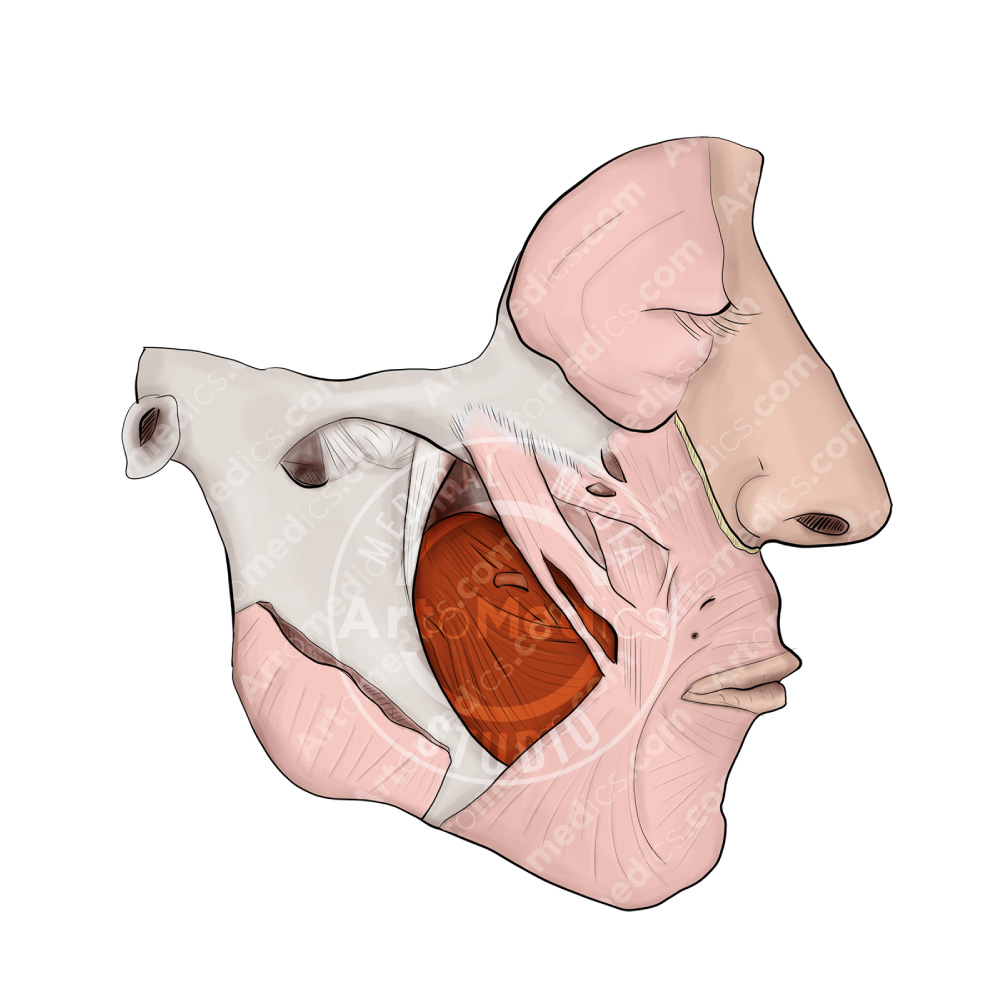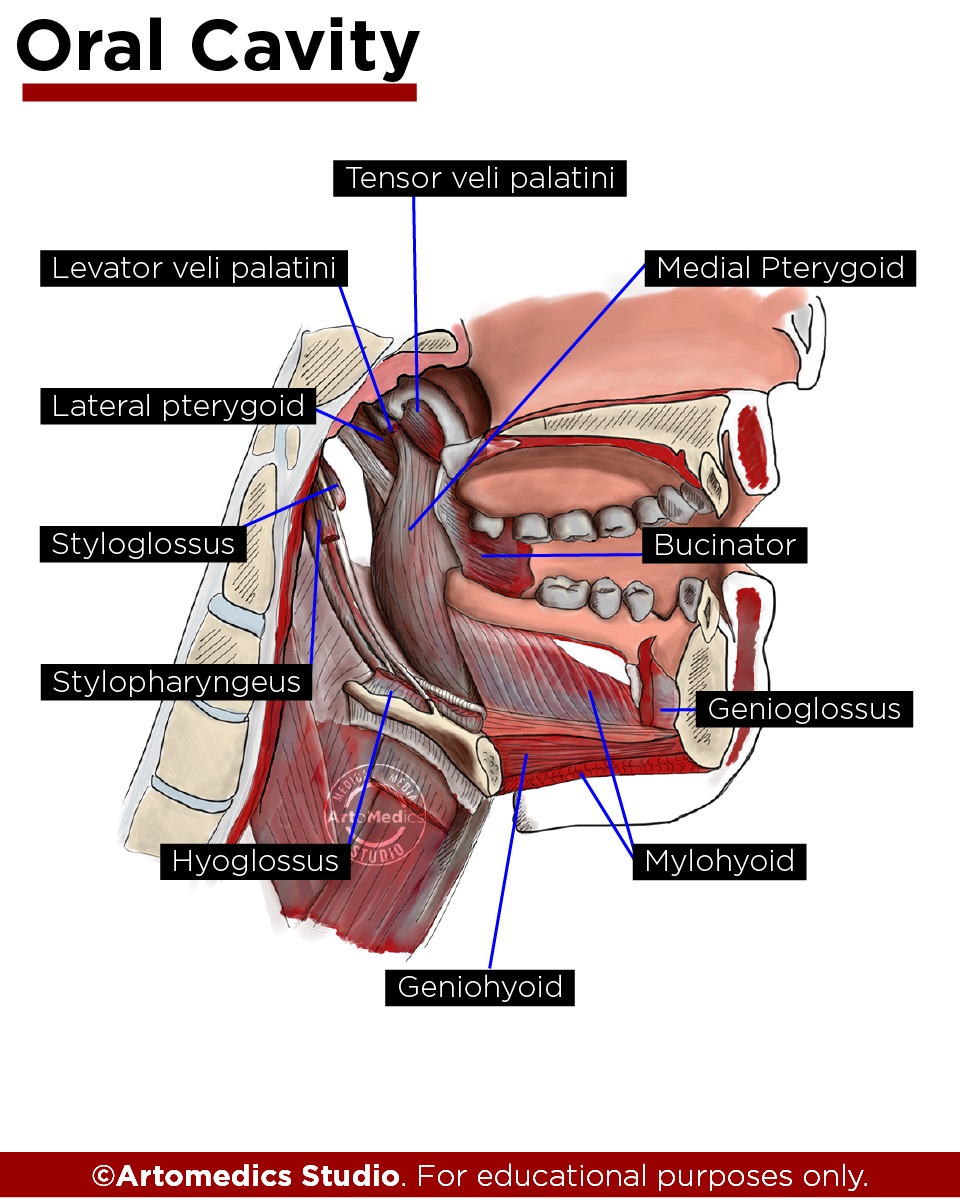Buccinator Muscle: The wall of your cheeks
The walls of your cheeks are decked with the Buccinator muscles on each side, forming the side of the cheeks.
The buccinator muscle belongs to the Buccolabial muscle group, which contributes to the shape of the mouth and the posture of the lips, creating a tridimensional assembly.

The Buccolabial muscle group includes:
- Upper lip
- Levator Labii Superioris Alaeque Nasi
- Levator Labii Superioris
- Zygomaticus (major and minor)
- Levator Anguli Oris
- Risorius
- Lower Lip
- Depressor Labii Inferioris
- Depressor Anguli Oris
- Mentalis
And a compound sphincter of the mouth, Orbicularis Oris.
Buccinator (used to be spelled Bucinator in the past) starts at the alveolar processes of the maxilla and mandible, with fibres converging at the modiolus by the angle of the mouth, but interweaving with Orbicularis Oris, with the ones from below (mandibular fibres) attaching to the upper part of Orbicularis oris and the fibres from above (maxillary fibres) crossing and weaving into the lower part of said muscle. That’s how it helps in it’s function of sucking and suckling.

What does the Buccinator Muscle do?
Buccinator muscle compresses the cheeks and helps distributing food back to the teeth and gums when chewing. Whenever we blow a balloon and play air instruments like trumpets, we’re fully engaging the actions of the Buccinators, which gives rise to it’s name, for buccinators in latin means Trumpeter.
| Actions | The buccinator compresses the cheeks against the teeth, increasing pressure within the mouth during sucking and blowing air or ballooning the mouth. Assists in chewing. |
| Blood Supply | Buccal Artery, from facial artery |
| Innervation | Buccal branch of the facial nerve (CN7) |
| Origin | Maxilla, Mandible, pterygomandibular raphe |
| Insertion | Intertwines with Orbicularis Oris fibers, angle of the mouth |
Buccinator as island flap
The Buccinator muscle has ease of access when it comes to dissection but a group of researchers that wrote a paper think that it just doesn’t receive enough attention in literature to be considered to use as an island flap when grafting. This means that a graft is divorced from any skin from the donor site.
They concluded that this muscle can be easily used as an island flap in surgery, providing healthy mucosa even if it lacks movement capabilities or any feeling at all.
The word “Bucinator” means “Trumpeter” in latin
References
Standring, Susan. Gray’s Anatomy: The Anatomical Basis of Clinical Practice. , 2016. Print.
In Paulsen, F., & In Waschke, J. (2018). Sobotta atlas of human anatomy.

Leave a Reply